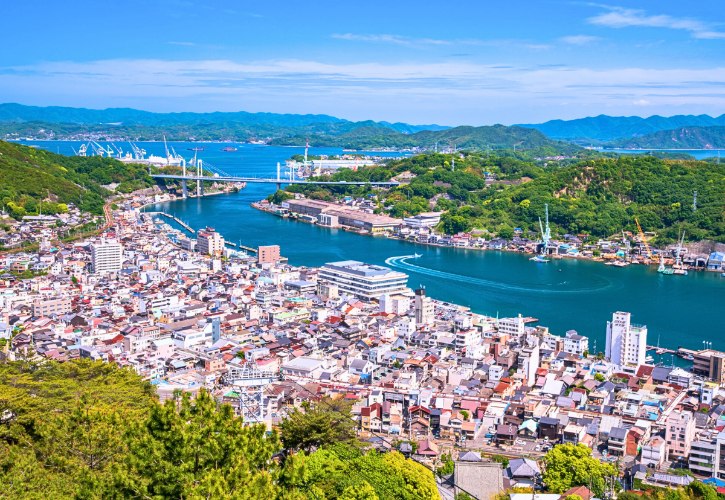
Looking for the best city to visit beyond Osaka and Kyoto? Go to Hiroshima.
It’s a place that stays with you, filled with history, peace, and great food.
Getting around is simple, and day trips to islands and seaside towns are easy to plan.
Here you’ll find the best places to explore, how to move around smoothly, and practical tips to make your visit easy and enjoyable. 😊
Central Hiroshima
1. Atomic Bomb Dome
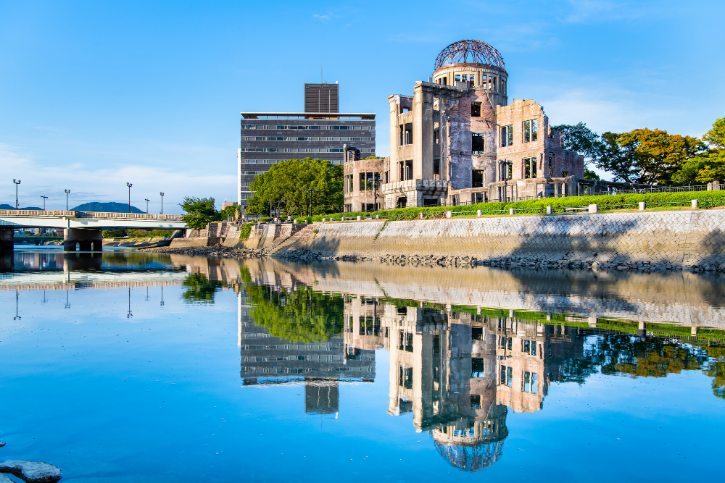
a. Why Visit
The Atomic Bomb Dome stands as a haunting reminder of August 6, 1945, preserved exactly as it was after the atomic blast – skeletal, powerful, and deeply moving.
You’ll find yourself drawn to its riverside location for quiet reflection, especially in the early morning when the crowds thin out and you can truly absorb its significance.
This UNESCO World Heritage site isn’t about beauty; it’s about understanding humanity’s capacity for destruction and our hope for peace.
Trust me, seeing it in person hits differently than any photograph ever could.
b. Highlights
- Best viewing spots: Walk across Motoyasu Bridge for the classic angle, or find a quiet spot along the riverbank where you can sit and contemplate
- Evening illumination: After sunset, soft white lights transform the dome into an ethereal silhouette against the night sky
- Cherry blossom contrast: In early April, blooming sakura trees nearby create a poignant scene of renewal beside the ruins
- Peace Tourism AR app: Download it to see 360-degree views of the building’s interior – you can’t enter, but this gives you perspective
- Early morning visits: Come before 8 AM for peaceful contemplation without tour groups
- August 6th memorial: If you’re here on this date, thousands of paper lanterns float past the dome in the evening
- Photography tip: Frame the dome through the Peace Memorial Cenotaph’s arch for that iconic aligned shot
2. Hiroshima Castle
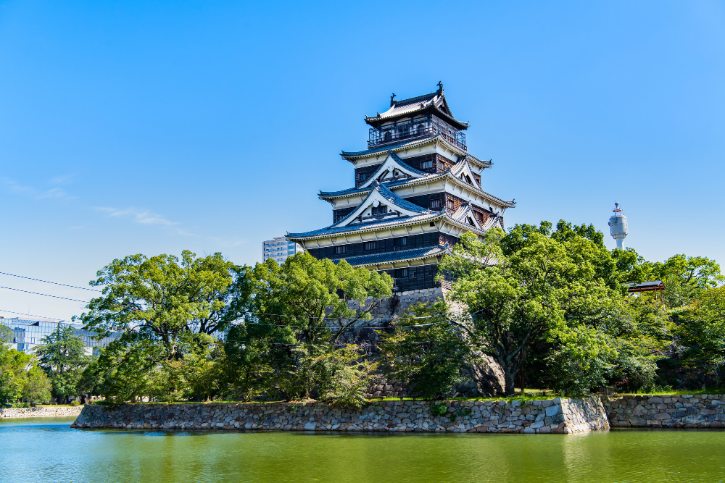
a. Why Visit
Hiroshima Castle, nicknamed “Carp Castle”, is a beautiful reconstruction that shows you what the city looked like before 1945 – a proud samurai stronghold that ruled western Japan.
The five-story main keep houses a fascinating museum where you can actually try on samurai armor (kids love this!), and the view from the top floor gives you a fantastic perspective of how Hiroshima rebuilt itself.
If you can, visit in spring when 350+ cherry trees turn the grounds pink, or come in the evening when the illuminated castle creates a striking silhouette against the modern skyline.
b. Highlights
- Top floor panorama: Climb all five floors for commanding views of the city and surrounding mountains
- Interactive museum: Try on samurai armor, handle replica swords, and explore feudal-era Hiroshima history
- Cherry blossom heaven: Early April brings spectacular hanami parties under hundreds of sakura trees
- Reconstructed Ninomaru: Explore the restored turrets and gates from 1994 – great for understanding castle defenses
- Evening illumination: The castle lights up until 10 PM, creating beautiful reflections in the moat
- Gokoku Shrine: Catch a traditional Shinto wedding if you’re lucky – couples often marry here on weekends
- Note for 2026: The main keep will close for renovation in March 2026, so plan to visit earlier in the year
3. Hiroshima Peace Memorial Museum
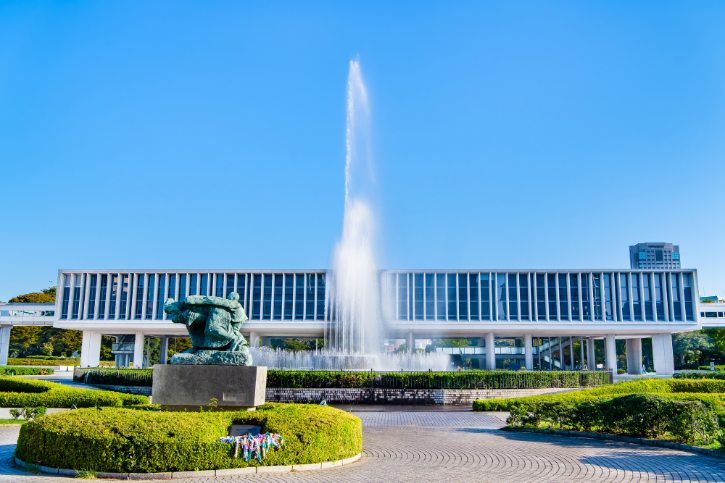
a. Why Visit
This museum tells the story of August 6, 1945, through personal belongings, photographs, and survivor testimonies – it’s emotionally challenging but absolutely essential for understanding Hiroshima.
You’ll need 1-2 hours to properly absorb the exhibits, which have been thoughtfully renovated with multilingual displays and interactive elements.
Book your time slot online in advance to avoid the midday crowds (11 AM-2 PM gets packed), and consider visiting on a weekday morning for a more contemplative experience.
Many visitors describe this as life-changing, and they’re not exaggerating.
b. Highlights
- Personal artifacts: A stopped watch frozen at 8:15 AM, a child’s charred tricycle, melted bottles – these items tell stories words cannot
- Two-building journey: Start in the East Building for context, then the Main Building for the human impact
- Survivor testimonies: Video stations share hibakusha stories – have tissues ready
- Scale model comparison: See Hiroshima before and after the bombing in a massive diorama
- Paper crane displays: Thousands of colorful origami cranes sent from around the world as prayers for peace
- Quiet reflection space: End your visit in the contemplation area with the Peace Watch Clock
- Best visiting time: Book the 9 AM slot on weekdays for the least crowded, most impactful experience
4. Peace Memorial Park
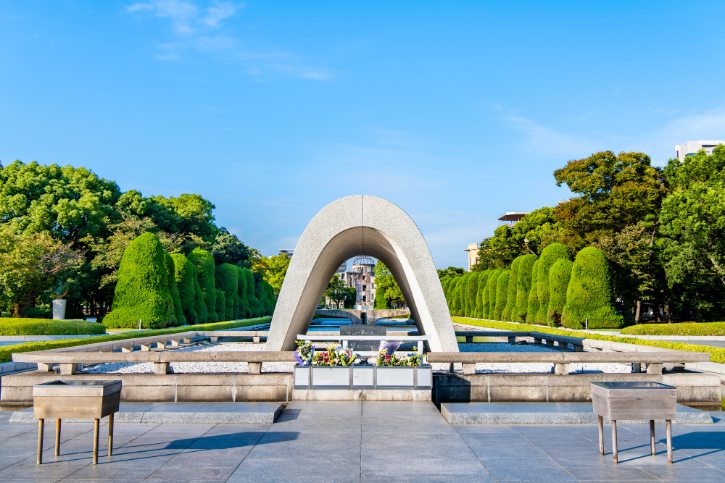
a. Why Visit
Built where Hiroshima’s bustling downtown once stood, this vast green park transforms a site of devastation into a place of hope and remembrance.
You’ll find over 60 monuments and memorials scattered throughout, each telling a different story of loss and resilience – it’s designed as an emotional journey that helps you process what you’ve learned at the museum.
The park’s central axis creates a powerful sight line connecting the A-Bomb Dome, Flame of Peace, and Cenotaph, making it feel like one cohesive memorial.
Come early morning for peaceful walks or at sunset when the monuments cast long shadows and the riverside path feels especially tranquil.
b. Highlights
- The Cenotaph: An arched stone shelter holding names of all victims – look through it to see the dome perfectly framed
- Flame of Peace: Burning since 1964, it won’t be extinguished until all nuclear weapons are gone
- Peace Bell: You’re encouraged to ring it – the deep resonance carries across the park
- Atomic Bomb Memorial Mound: A grass-covered hill containing ashes of 70,000 unidentified victims
- Underground Memorial Hall: Often missed but powerful – a 360° panorama of post-bomb Hiroshima
- Spring cherry blossoms: Over 300 sakura trees line the riverbanks, creating beauty from tragedy
- August 6th ceremony: If you’re here, the 8:15 AM moment of silence is unforgettable
5. Children’s Peace Monument
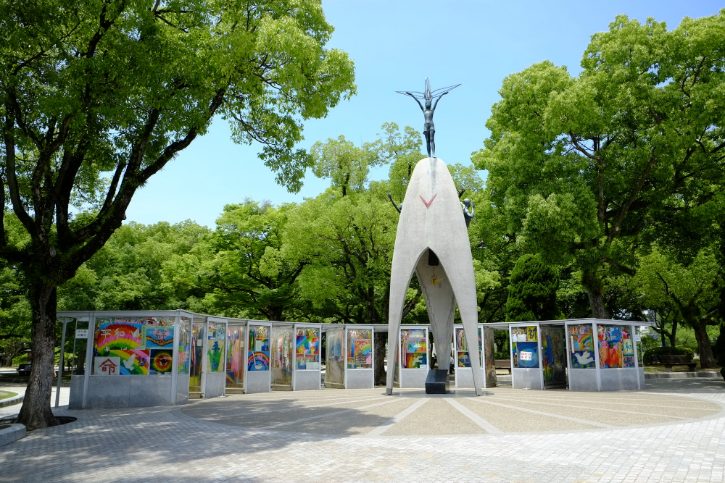
a. Why Visit
This touching monument honors all child victims of the atomic bomb, inspired by Sadako Sasaki who died of leukemia after folding 1,000 paper cranes in hope of recovery.
You’ll often find school groups here singing songs or presenting their own paper cranes, which adds an unexpectedly uplifting element to what could be a somber site.
The colorful displays of thousands upon thousands of folded cranes from children worldwide show how Sadako’s story continues to inspire hope.
It’s especially meaningful if you’re traveling with kids, as it helps them connect with history through a child’s story.
b. Highlights
- Sadako’s statue: A bronze girl lifting a golden crane skyward – hopeful despite the tragedy
- Glass crane cases: Absolutely stunning displays of colorful origami cranes sent from schools globally
- The inscription: “This is our cry. This is our prayer. For building peace in the world” – written by children
- Ring the bell: Under the monument, a crane-shaped bell that visitors gently ring for peace
- School ceremonies: You might witness Japanese students singing or dedicating cranes – genuinely moving
- Bring your own crane: Many visitors fold and leave their own paper cranes as personal prayers
- Children’s Day visits: May 5th sees special tributes that are particularly touching
6. Nagarekawa
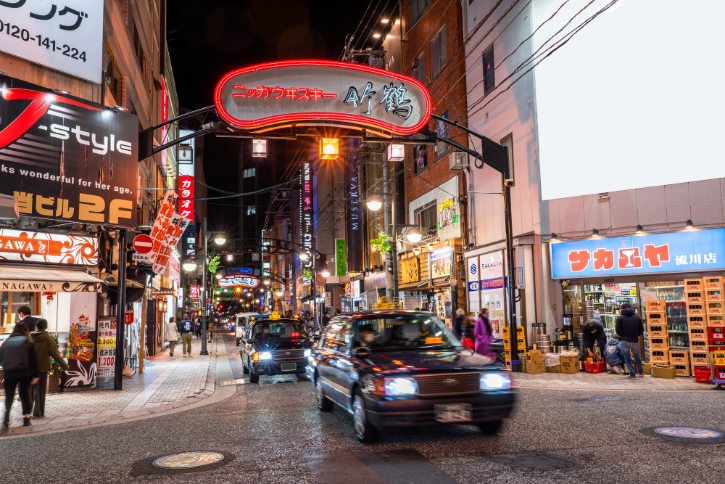
a. Why Visit
When the sun sets, Nagarekawa transforms into the Chugoku region’s biggest entertainment district – a neon-lit maze where locals unwind with good food, drinks, and karaoke until the early hours.
This is where you’ll find authentic Hiroshima nightlife, from tiny 8-seat izakayas run by chatty mama-sans to modern craft cocktail bars hidden on third floors.
The energy peaks on Friday and Saturday nights, especially after Hiroshima Carp baseball games when fans flood in wearing team jerseys.
Don’t be shy about ducking into a random doorway – some of the best spots are practically hidden, and locals are surprisingly welcoming to respectful foreigners.
b. Highlights
- Izakaya hopping: Do as locals do – move from one tiny pub to another, trying different sake and snacks
- Fresh oysters everywhere: Grilled, fried, or raw – Hiroshima’s famous kaki are at their best here
- Late-night ramen fix: After drinks, follow the crowds to steaming bowls of Onomichi ramen
- Weekend energy: Friday and Saturday nights buzz with locals doing “hashigo-zake” (ladder drinking)
- Hidden upper floors: Look up – some of the best bars are on 2nd and 3rd floors with tiny signs
- Karaoke till dawn: Belt out songs until 4 AM if you want – it’s a quintessential Japanese experience
- Best arrival time: Show up after 7 PM when the neon lights flicker on and streets fill with life
7. Shukkeien Garden
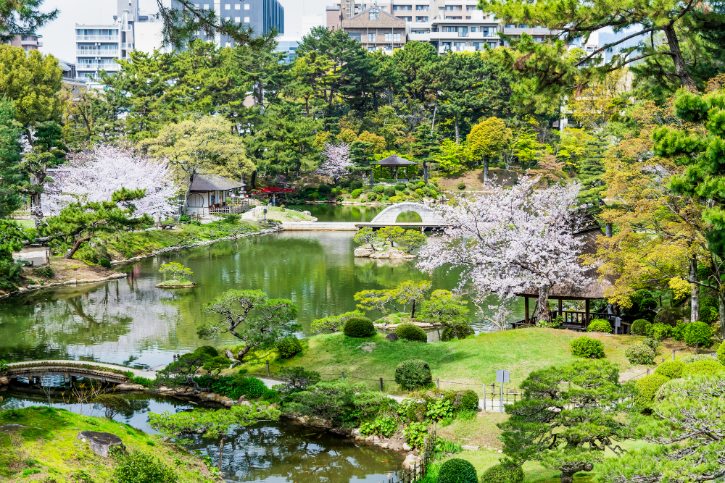
a. Why Visit
This 400-year-old “shrunken scenery garden” recreates famous Chinese and Japanese landscapes in miniature, complete with valleys, mountains, and forests arranged around a central koi pond.
You’ll find yourself naturally slowing down as you follow the winding paths, discovering new perfectly composed views with each turn – it’s designed so every angle looks like a painting.
The garden survived the atomic bomb (barely), and several trees still standing actually lived through the blast, adding an element of resilience to its beauty.
Visit during autumn maple season or spring plum blossoms for peak gorgeousness, though honestly, even on a regular Tuesday it’s magical.
b. Highlights
- Koko-kyo Bridge: The stone arch bridge over the pond creates perfect photo reflections
- Feed the koi: Buy fish food at the entrance and watch dozens of colorful carp swarm eagerly
- Survivor trees: Look for marked ginkgo and pine trees that withstood the atomic blast
- Tea houses: Traditional pavilions dot the water’s edge – sometimes open for ceremonies
- Seasonal spectacular: Late February plum blossoms, April cherry blossoms, November maples – each season transforms the garden
- Morning serenity: Come early to have the paths nearly to yourself with mist over the pond
8. Okonomimura (Okonomiyaki Village)
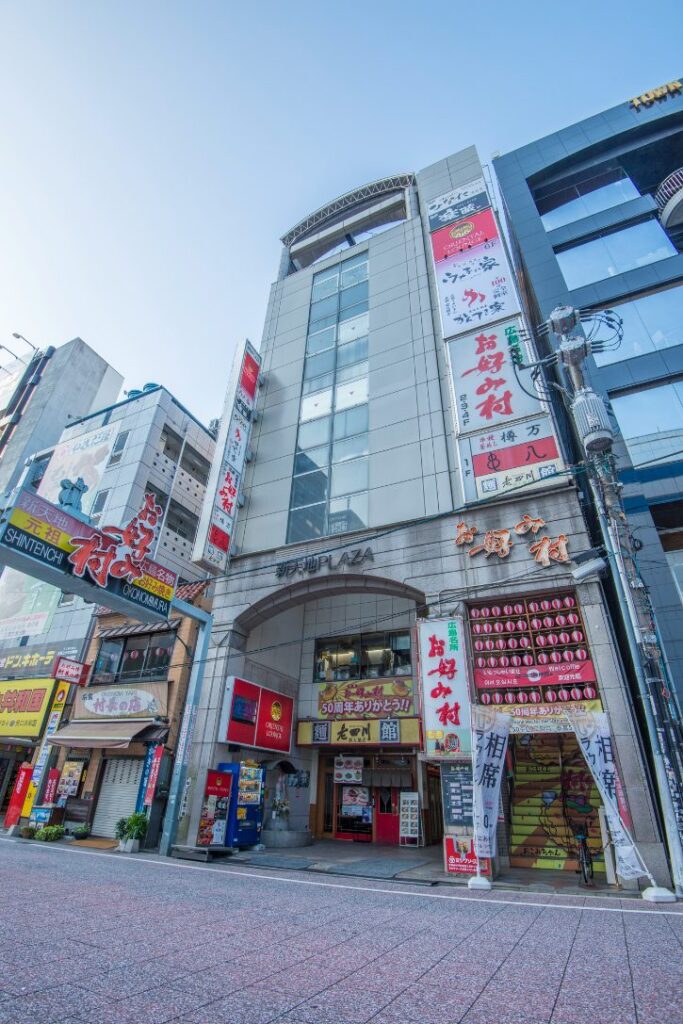
a. Why Visit
Okonomimura is three floors of okonomiyaki paradise where over 20 stalls compete to serve you Hiroshima’s signature layered pancake – and watching the chefs build these edible towers on hot griddles is half the fun.
You’ll sit at a counter surrounding the teppan, mesmerized as they skillfully layer batter, mountains of cabbage, noodles, pork, and egg into something that somehow holds together and tastes incredible.
The atmosphere is lively and casual, with the sizzle of griddles and chatter of satisfied diners creating a uniquely Hiroshima dining experience.
Each stall has its own loyal following and secret sauce recipe, so locals will passionately debate which one is best.
b. Highlights
- 23 stalls to choose: Wander all three floors first to see where locals are lining up – that’s your cue
- Watch the show: Chefs flip and layer ingredients with practiced precision right in front of you
- Hiroshima-style only: These aren’t mixed pancakes but carefully layered creations with yakisoba or udon
- Oyster season special: Winter brings kaki-oko loaded with plump local oysters
- Customize your order: Add cheese, extra green onions, shrimp, or mochi – make it yours
- Cold beer essential: Nothing pairs better with hot okonomiyaki than an ice-cold Asahi
- Peak times: Expect waits during weekday lunch and weekend evenings, but turnover is quick
9. Hondori Street (Shopping Arcade)
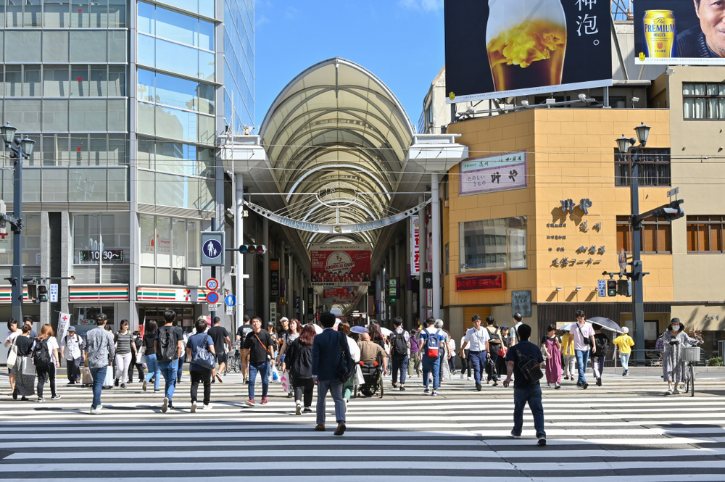
a. Why Visit
This covered shopping arcade stretches for over half a kilometer through downtown, buzzing with 100,000 people daily who come to shop, eat, and people-watch in all weather.
You’ll find everything from major Japanese fashion brands to tiny shops selling handmade crafts, plus cafes perfect for watching Hiroshima life flow past.
The arcade connects seamlessly to department stores and branches into smaller alleys hiding specialty shops and restaurants.
It’s where teenagers hang out after school, salarymen grab quick lunches, and tourists hunt for that perfect Hiroshima Carp souvenir.
b. Highlights
- 200+ shops: Major brands like UNIQLO mix with local boutiques selling unique Hiroshima goods
- Momiji manju everywhere: Sample different flavors of the maple-leaf cakes from competing shops
- Game center fun: Try your luck at claw machines or take silly purikura photos
- Weekend street performers: Musicians and magicians often entertain the crowds
- Department store connections: Direct access to Parco and massive Don Quijote for one-stop shopping
- All-weather comfort: The covered roof means shopping in any season, rain or shine
- Evening energy: After 5 PM, the arcade fills with people heading to dinner or Nagarekawa nightlife
Kure
10. Yamato Museum
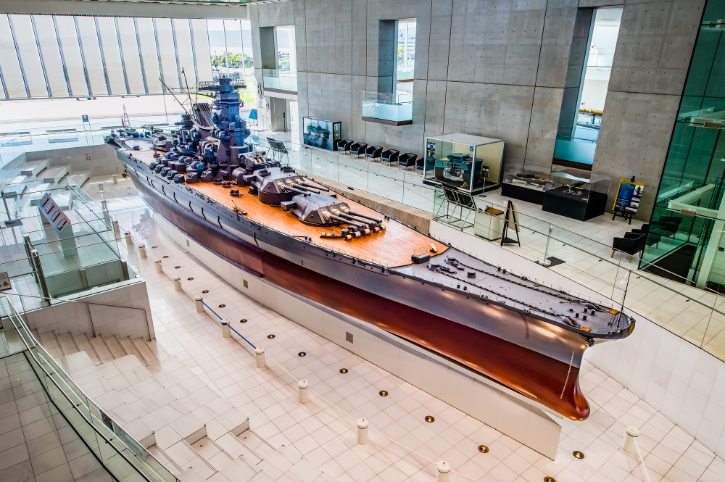
a. Why Visit
The Yamato Museum in Kure showcases Japan’s naval history through the lens of the legendary battleship Yamato, with a jaw-dropping 1:10 scale model that really drives home just how massive these ships were.
Important note for 2025: the main museum is closed for renovation until March 2026, but you can still see the giant Yamato model via a special viewing path.
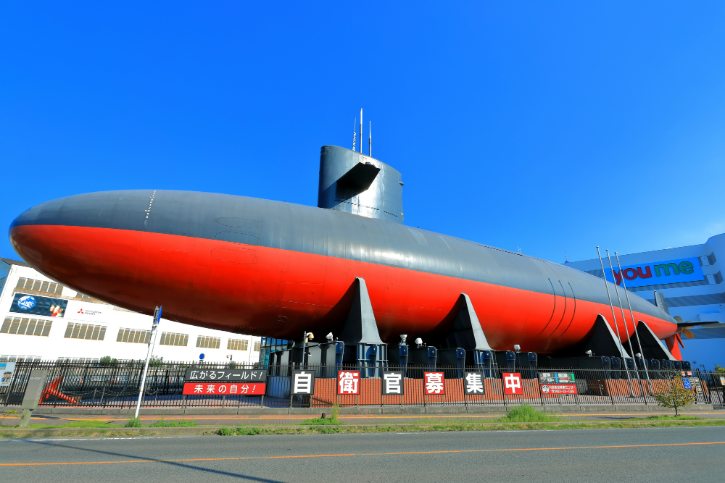
The adjacent submarine museum (free entry!) lets you actually board a real decommissioned sub, making Kure still worth the trip for military history buffs.
The harbor views and industrial heritage of Japan’s former premier naval base add atmosphere to your visit.
b. Highlights
- Giant Yamato model: Even during renovation, the 26-meter model is viewable – it’s absolutely massive
- Free submarine museum: Board the Akishio submarine next door – kids especially love this
- Harbor walk: See Yamato’s actual dimensions outlined on the ground – mind-blowing scale
- Museum shop: Excellent model ships and naval history books, open despite main building closure
- Combined experience: Pair with the submarine museum for a full maritime history day
- Return in late March 2026: Plan a repeat visit when the fully renovated museum reopens with new exhibits
Miyajima Island
11. Itsukushima Shrine
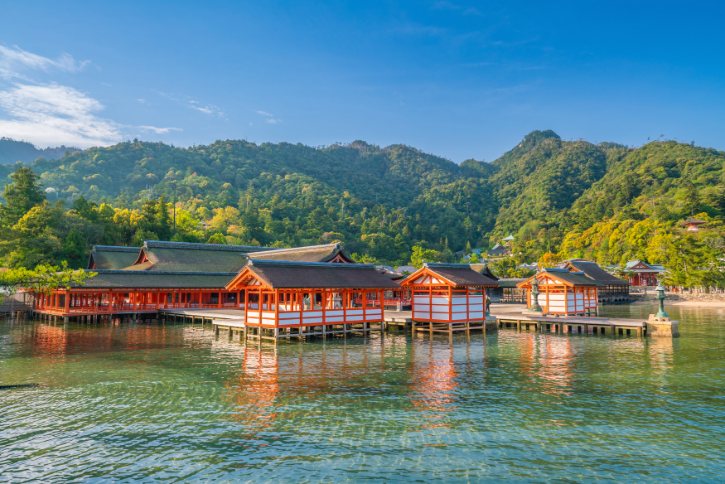
a. Why Visit
Itsukushima Shrine and its famous vermillion torii gate create one of Japan’s most photographed scenes, seemingly floating on water at high tide in a display that feels almost supernatural.
You absolutely must check the tide tables before visiting – high tide shows the “floating” shrine in all its glory, while low tide lets you walk right up to the massive gate and see its impressive scale up close.
The shrine complex itself is an architectural marvel with wooden corridors built over the water that gently flex with the waves beneath your feet.
Stay until evening if possible – the illuminated shrine and gate reflected in the dark water create pure magic.
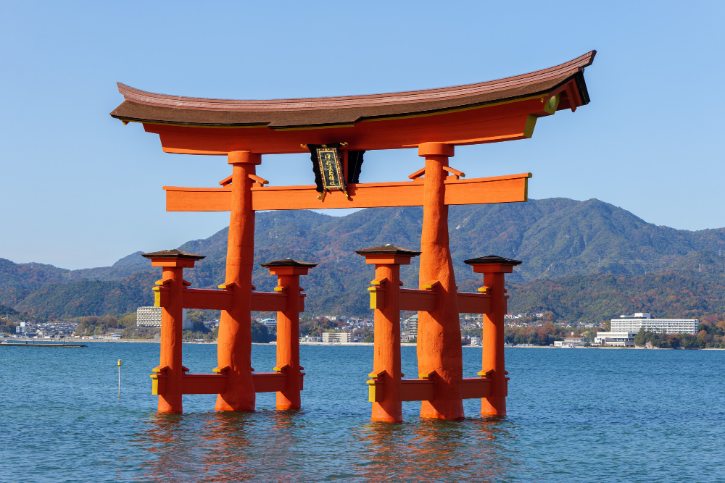
b. Highlights
- Tide timing crucial: Check online tables – you want levels above 250cm for floating views, below 100cm to walk to the gate
- The Grand Torii: Recently renovated and stunning – at low tide, you can touch its massive camphor pillars
- Sunset photography: Golden hour creates incredible silhouettes and reflections
- Evening illumination: Shrine and gate lit until 11 PM – absolutely magical after dark
- Sacred deer everywhere: Miyajima’s famous deer often photobomb your shrine pictures
- Cultural ceremonies: Morning prayers or occasional traditional weddings add authentic atmosphere
12. Mount Misen
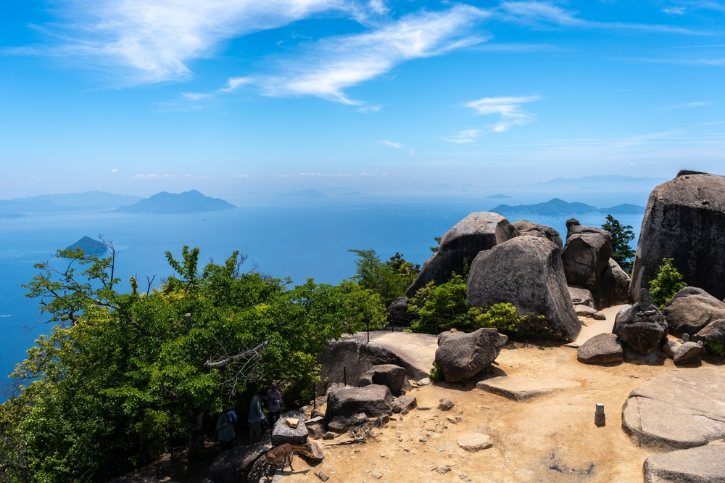
a. Why Visit
Mount Misen rises 535 meters above Miyajima, offering spectacular panoramic views of the Seto Inland Sea’s countless islands – on clear days you can see all the way to Shikoku.
You can ride the scenic ropeway most of the way up (the views during the ride alone are worth it) or hike through primeval forest if you’re feeling energetic.
Near the summit, you’ll discover ancient temple buildings and the famous “eternal flame” that’s been burning for 1,200 years, supposedly lit by the monk Kobo Daishi himself.
The combination of natural beauty, spiritual sites, and those incredible views makes the journey to the top incredibly rewarding.
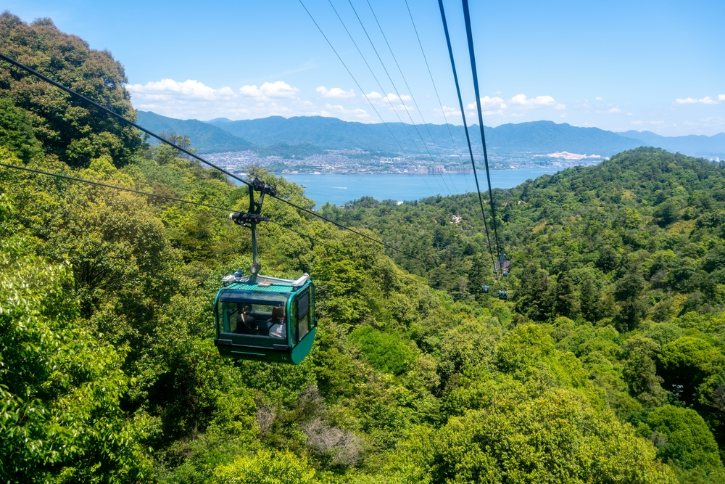
b. Highlights
- Two-stage ropeway: The 15-minute ride offers breathtaking aerial views of forest and sea
- 360-degree summit views: See the entire Inland Sea dotted with islands and oyster farms below
- Eternal flame at Reikado Hall: This 1,200-year-old fire was used to light Hiroshima’s Peace Flame
- Seven Wonders of Misen: Hunt for mysterious rock formations and spiritual sites with legends attached
- Hiking options: Three trails if you prefer earning your views – Momijidani is the most scenic
- Autumn colors spectacular: Late November brings fiery maple forests
- Timing critical: Last ropeway down is around 4:30 PM – don’t get stranded on the mountain!
13. Omotesando Shopping Street
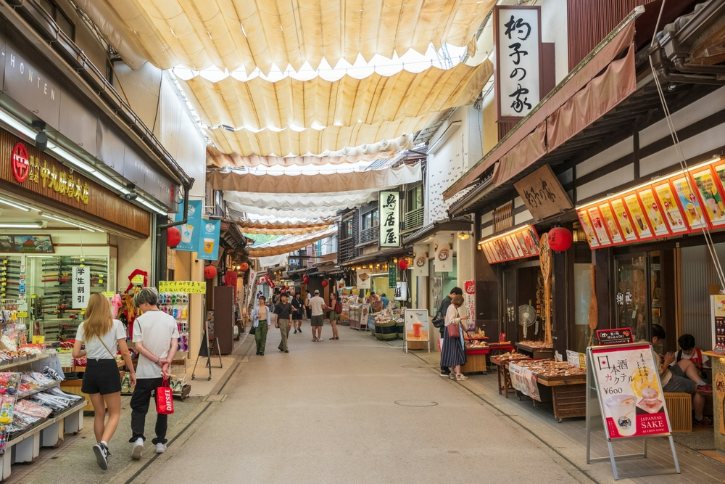
a. Why Visit
This lively 350-meter shopping street connects Miyajima’s ferry terminal to Itsukushima Shrine, packed with shops and food stalls where you absolutely must try the island’s famous treats.
You’ll smell the sweet aroma of fresh momiji manju being made, see oysters grilling over charcoal, and probably get distracted by the island’s friendly deer trying to nibble your map.
The street maintains its traditional feel with wooden shopfronts and family businesses that have operated for generations.
It’s busiest midday when day-trippers arrive, so early morning or late afternoon offers a more relaxed shopping experience.
b. Highlights
- Fresh momiji manju: Watch them make these maple-leaf cakes and get them still warm – try unique fillings like cheese or chocolate
- Grilled oysters: Plump kaki grilled in their shells right in front of you – peak season is winter
- World’s largest rice paddle: Find the giant shamoji on display – Miyajima invented these lucky paddles
- Age-momiji treat: Deep-fried momiji manju – crispy outside, creamy inside, dangerously addictive
- Craft shopping: Hand-carved wooden items and Miyajima-bori woodwork make unique souvenirs
- Deer encounters: They’re everywhere, trying to eat papers from your hands – keep belongings secure!
- Early or late visits: Shops open around 9 AM and close by 6 PM – avoid midday tour group crushes
14. Daishoin Temple
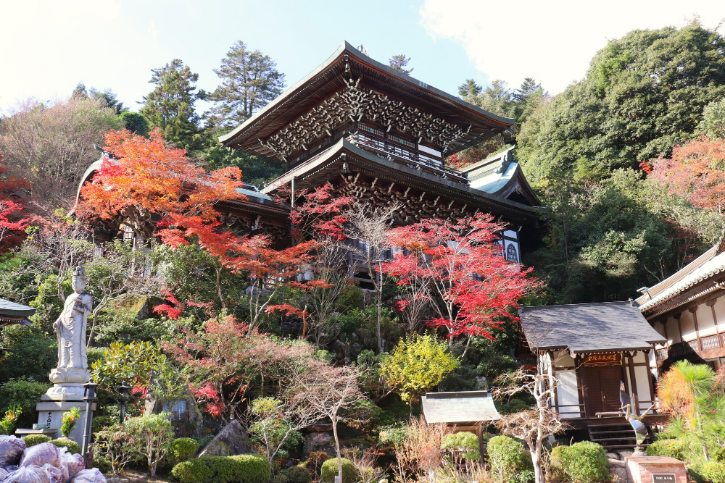
a. Why Visit
Daishoin is Miyajima’s most important Buddhist temple, yet many visitors miss it in their rush between the shrine and ropeway – their loss, your peaceful gain.
The temple complex at Mount Misen’s base offers a fascinating mix of Buddhist statuary, prayer wheels, and mystical caves without the crowds.
As you climb the approach stairs, spinning the prayer wheels brings the same merit as reading the sutras they contain.
The variety here is incredible – from 500 unique rakan statues with different expressions to an underground cave representing the 88-temple pilgrimage.
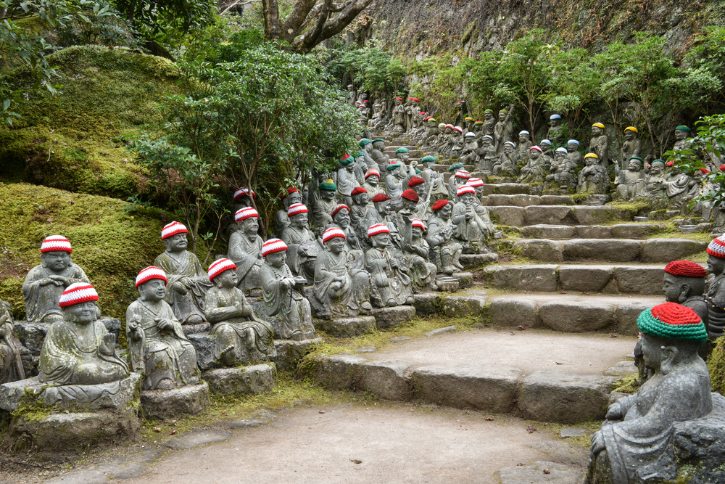
b. Highlights
- Spinning prayer wheels: Turn each one as you climb the main stairs – it’s meditative and meaningful
- 500 Rakan statues: Each disciple statue has a unique face – locals say one looks just like you
- Henjokutsu Cave: Walk through this atmospheric underground passage with 88 temple icons
- Eternal flame connection: See where Kobo Daishi’s flame burns – same one on Mount Misen
- Autumn maples: One of Miyajima’s best spots for fall colors without the crowds
- Multiple temple halls: Explore different buildings housing various Buddhist deities
- Free admission: Unlike many temples, Daishoin welcomes all visitors without charge
Fukuyama
15. Tomonoura
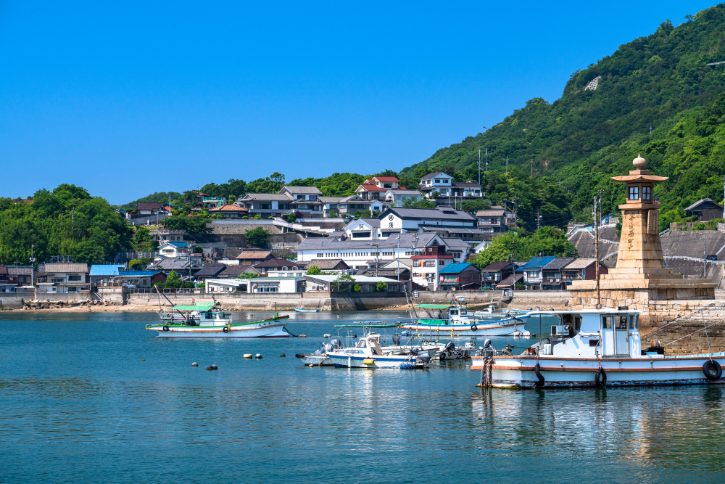
a. Why Visit
Tomonoura is a perfectly preserved Edo-period port town where narrow lanes wind past traditional wooden houses and sake breweries that look exactly as they did centuries ago.
This charming fishing village inspired Studio Ghibli’s “Ponyo” and featured in “The Wolverine”, but it remains refreshingly uncommercialized.
The harbor still uses its original stone steps and wharfs from when ships waited here for favorable tides.
You’ll want to spend half a day wandering the atmospheric streets, sampling the local homeishu liqueur, and soaking in views that poets have praised for generations.
b. Highlights
- Joyato Lighthouse: The elegant 1859 stone lighthouse stands guard over the picturesque harbor
- Harbor views: Watch fishing boats and swirling tidal currents from the historic waterfront
- Ota Residence: Tour this preserved merchant house and traditional homeishu brewery
- Homeishu tasting: Sample the sweet 16-herb medicinal liqueur that’s been made here for centuries
- Ponyo connections: Spot locations that inspired Hayao Miyazaki’s animated masterpiece
- Sensui Island ferry: Take a quick 5-minute boat ride for different perspectives of the coast
- Morning mist magic: Early visits reward you with ethereal harbor views as mist lifts off the water
16. Abuto Kannon
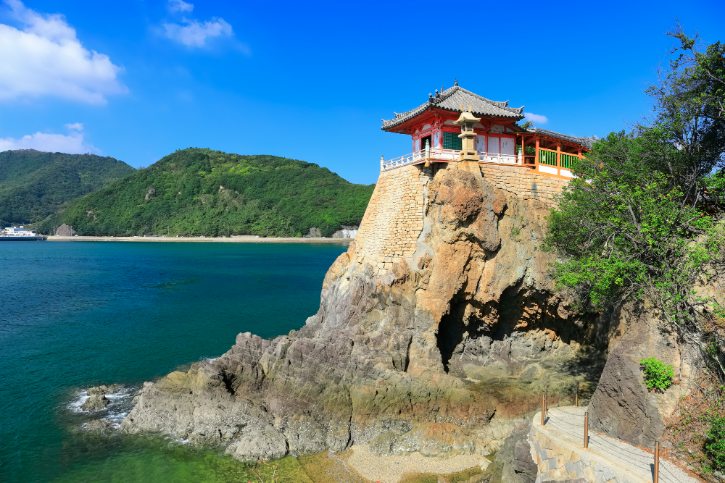
a. Why Visit
Perched dramatically on a rocky cliff 20 meters above the Seto Inland Sea, Abuto Kannon’s vermillion temple hall seems to defy gravity as it juts out over the crashing waves below.
This isn’t the easiest place to reach (requiring a bus and walk or taxi from Tomonoura), but the spectacular setting makes it absolutely worth the effort.
The temple has protected sailors and answered prayers for safe childbirth for over 400 years, and you can feel that accumulated faith in the peaceful atmosphere.
Walking the narrow corridor that wraps around the hall with the sea churning below is genuinely thrilling.
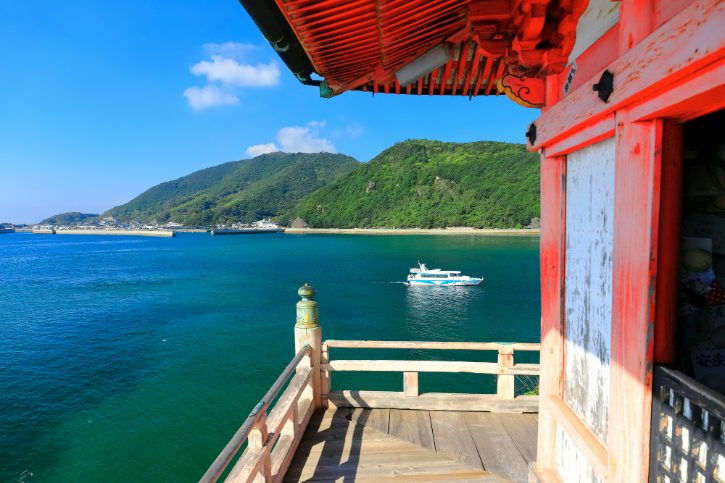
b. Highlights
- Clifftop setting: The bright red hall against blue sea and gray rocks creates stunning photo opportunities
- Narrow outer corridor: Walk the wooden walkway for heart-racing views straight down to the waves
- Important Cultural Property: This 1570 building is nationally recognized for its unique architecture
- Prayer offerings: See the unique “breast ema” plaques left by women praying for safe childbirth
- Combine with Tomonoura: Just 15km away, making a perfect cultural day trip combo
- Best light: Morning sun illuminates the red hall beautifully against the sea
- Boat tour views: Some Tomonoura cruises pass by for a unique water-level perspective
Onomichi
17. Senkoji Temple
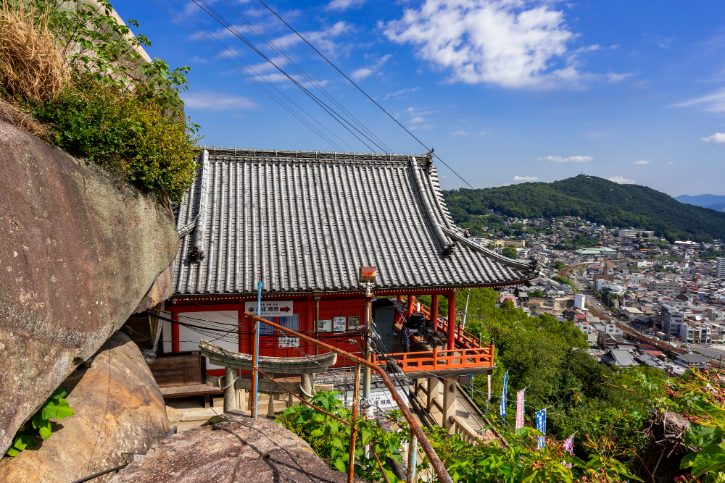
a. Why Visit
Senkoji Temple’s bright red main hall clings to the hillside above Onomichi, rewarding those who make the climb (or take the ropeway) with absolutely stunning panoramic views over the town and Seto Inland Sea.
The temple is the crown jewel of Onomichi’s temple walk, and the journey up through the narrow “Cat Alley” lanes is just as charming as the destination itself.
You’ll encounter friendly cats lounging on stone steps, tiny shrines tucked into corners, and art installations celebrating the town’s creative spirit.
The temple bell, chosen as one of Japan’s “100 Soundscapes”, rings out over Onomichi at 6 AM and 6 PM.
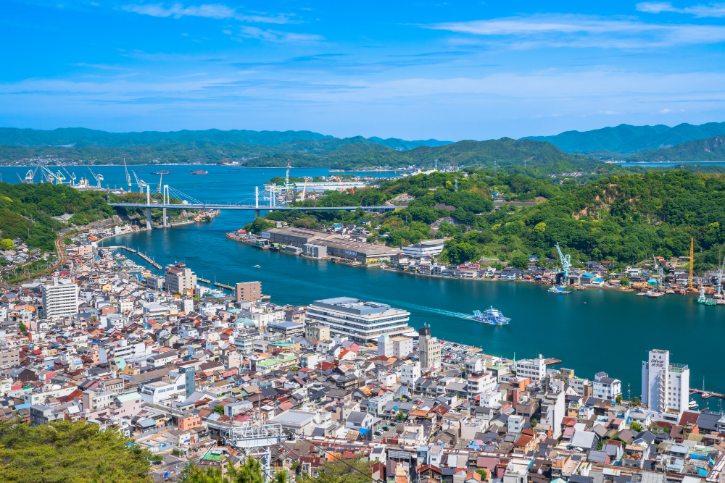
b. Highlights
- Spectacular viewpoint: The observation deck offers one of the Inland Sea’s best panoramas
- Ropeway option: A scenic 3-minute ride saves your legs while providing aerial town views
- Red Hall architecture: The vermillion main hall built on stilts resembles Kyoto’s Kiyomizu-dera
- Tama no Iwa boulder: This massive “Jewel Rock” supposedly once glowed at night to guide ships
- Cat Alley charm: The walk up passes through lanes full of friendly felines and quirky art
- Temple bell: If you’re there at 6 PM, the resonant bell creates an atmospheric moment
- Cherry blossom paradise: 1,500 sakura trees make this spectacular in early April
18. Kousanji Temple
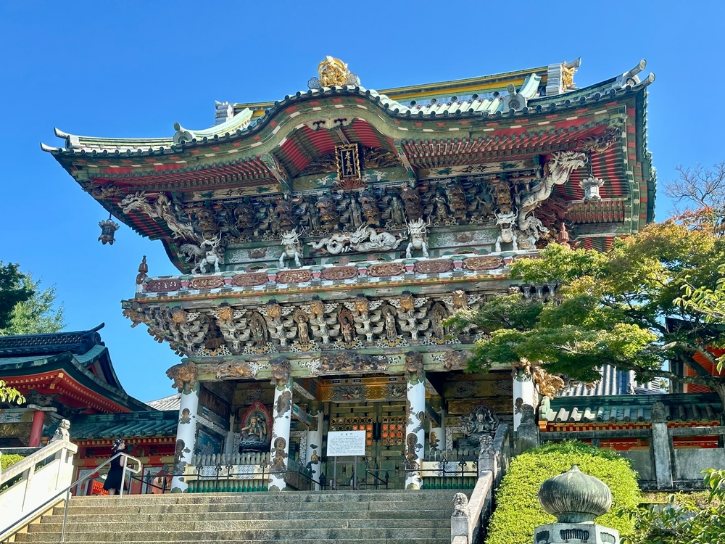
a. Why Visit
Kousanji Temple on Ikuchijima Island is unlike any temple you’ve ever seen – imagine someone with unlimited funds decided to recreate Japan’s greatest temple buildings and then top it off with a surreal Italian marble sculpture garden.
Built in the 1930s by a wealthy businessman to honor his mother, it’s wonderfully over-the-top with replica buildings from Nikko and Kyoto painted in eye-popping colors.
The highlight is the “Hill of Hope”, where 5,000 square meters of white Carrara marble creates an otherworldly landscape.
Many visitors bike here via the Shimanami Kaido route, making it a perfect cycling destination.
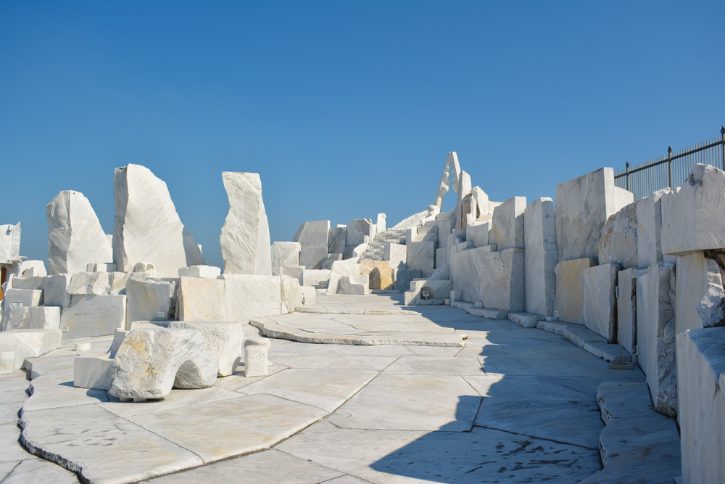
b. Highlights
- Hill of Hope marble garden: Pure white Italian marble sculptures against blue sky – absolutely surreal
- Temple building replicas: Incredibly detailed recreations of Japan’s most famous structures
- Underground Hell Cave: Descend into a genuinely spooky Buddhist hell with eerie lighting
- Art museum: Houses important Buddhist statues mixed with modern art pieces
- Mother’s love story: The entire complex exists as one son’s elaborate tribute to his mom
- Cycling stop: Perfect break point on the Shimanami Kaido bike route
- Lemon treats nearby: Ikuchijima is famous for lemons – try the lemon ice cream after your visit
Takehara
19. Takehara Townscape Conservation Area
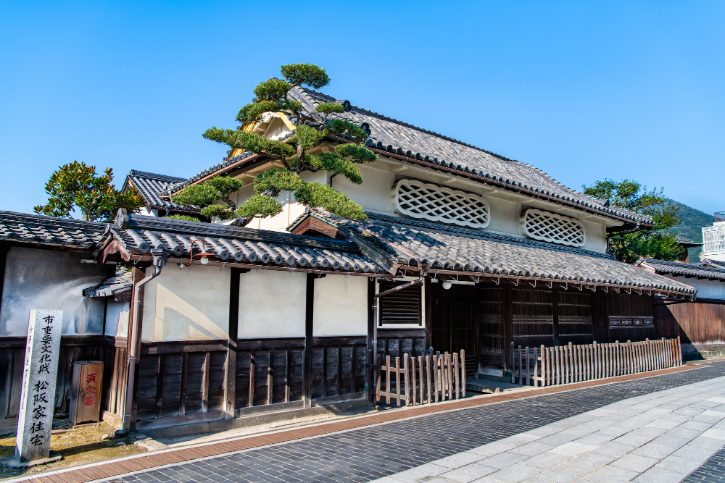
a. Why Visit
Known as “Aki’s Little Kyoto”, Takehara’s preserved historic district lets you wander through authentic Edo-period streets lined with elegant merchant houses and sake breweries, all without the crowds of more famous towns.
The wealthy salt and sake merchants who lived here built beautiful homes with distinctive latticed windows that still line the quiet stone streets today.
This is where Masataka Taketsuru, founder of Nikka Whisky, grew up, and you can visit his family’s sake brewery.
The autumn Lantern Festival, when thousands of bamboo lights illuminate the old streets, creates pure magic.
b. Highlights
- Preserved streetscapes: Namako-kabe white walls and wooden lattices create perfect period atmosphere
- Sake brewery visits: Tour Fujii or Taketsuru breweries for tastings and history
- Whisky connection: See the birthplace of Nikka Whisky’s founder (marked but private)
- Saihoji Temple views: Climb the hill for panoramic views over traditional tiled roofs
- Bamboo Lantern Festival: Late October sees thousands of candles lighting the historic streets
- Local specialties: Try takoyaki made with local octopus or bamboo shoot dishes
- Morning tranquility: Early visits mean having these time-travel streets nearly to yourself
20. Okunoshima Island
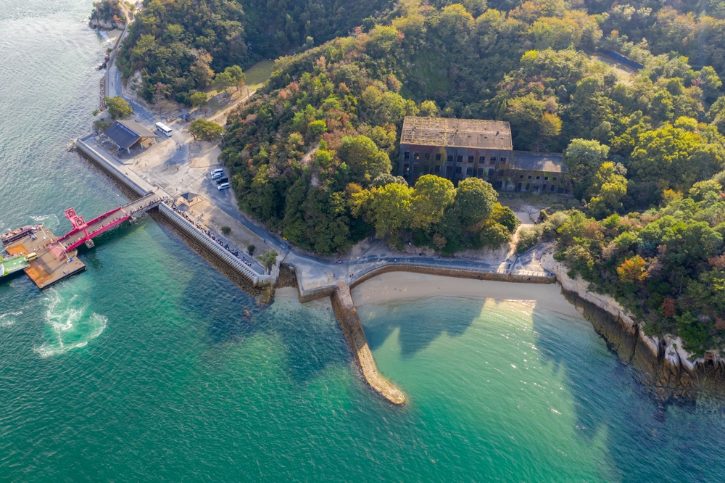
a. Why Visit
Okunoshima presents a surreal experience where hundreds of friendly wild rabbits hop freely around an island that once secretly produced poison gas during WWII.
The bunnies eagerly approach visitors for food (buy pellets before boarding the ferry), creating adorable chaos as they chase you down paths and congregate wherever you stop.
But there’s a sobering side too – the island’s small museum and eerie abandoned factory ruins tell the dark story of its past as a chemical weapons facility.
This unique combination of cute and historical makes for an unforgettable day trip.
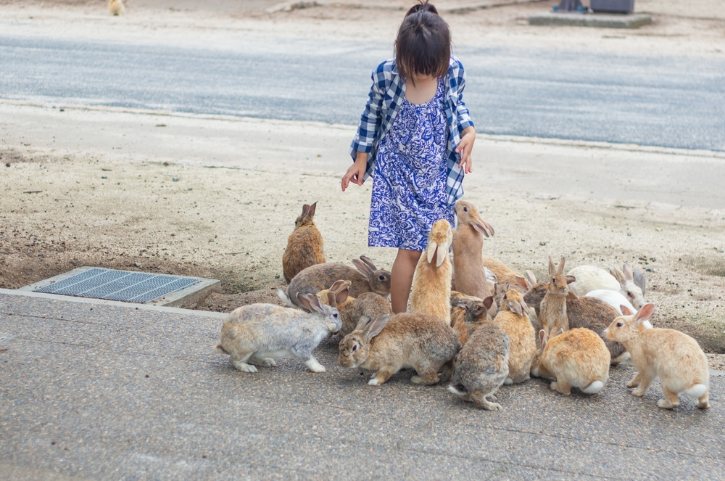
b. Highlights
- 500+ wild rabbits: They’re everywhere, in every color, eagerly bounding up for treats
- Poison Gas Museum: Small but important exhibit explaining the island’s secret wartime history
- Abandoned ruins: Explore crumbling factory buildings nature has reclaimed – hauntingly photogenic
- 4km loop trail: Easy walk around the island with sea views and rabbit encounters
- Important rules: Don’t pick up rabbits, only feed appropriate food, and buy it beforehand
- Best timing: Early morning or late afternoon when rabbits are most active, avoiding midday heat
Getting Around Hiroshima
a. Quick Primer
Main Transport Hubs
- Hiroshima Station: The city’s main gateway for Shinkansen, JR local trains, and airport buses
- Hondori / Nagarekawa area: The downtown core, close to Peace Memorial Park, shopping arcades, and most hotels
- Miyajimaguchi Station & Pier: Transfer point for JR trains and ferries heading to Miyajima Island
- Hiroshima Port: Departure point for ferries to other islands in the Seto Inland Sea
Hiroden Tram (Hiroshima Electric Railway)
- A historic network running since 1912, known for its green streetcars that survived WWII
- Connects Hiroshima Station, Peace Memorial Park, Hondori, and Miyajimaguchi
- Frequency: Every 10–15 minutes on main lines
- Speed: Not the fastest, but covers nearly every tourist area conveniently
- Fare: ¥240 per ride
JR Trains
- Ideal for regional trips outside the tram network
- Key routes include:
- JR Sanyō Line: connects Hiroshima to Miyajimaguchi, the gateway to Miyajima Island
- JR Kure Line: a scenic coastal route leading to Kure, home of the Yamato Museum
- JR Sanyō Main Line: continues eastward toward Onomichi and Fukuyama
- Fully covered by the Japan Rail Pass and JR West regional passes
Hiroshima Sightseeing Loop Bus “Meipuru-pu”
- Operated by Chugoku JR Bus Company and designed specifically for tourists
- Loops around major attractions such as Hiroshima Castle, Peace Memorial Park, and Shukkeien Garden
- Departs from Hiroshima Station every 15–30 minutes
- Fares: 1 ride – Adults (12 years and above) ¥240 / Children (ages 6–11) ¥120
- 1-Day Pass: Adults ¥600 / Children ¥300 (available for purchase on board the bus)
- Free with any JR Pass, including both the Nationwide JR Pass and JR West regional passes
- IC cards such as ICOCA can also be used for single rides
- For more details, you can check the official page here
Fares and Passes
- Single Tram Ride: ¥240
- Day Streetcar Pass: ¥700 — good value if taking 3 or more rides.
- IC Cards:
- ICOCA, Suica, PASMO work on all transport (trams, JR trains, buses).
- Helps you avoid fumbling for change.
- Visit Hiroshima Tourist Pass:
- Starts from ¥1,000.
- Covers trams, some buses, and the Matsudai Ferry to Miyajima.
b. Access to Each Attraction
- Atomic Bomb Dome – Take Hiroden Tram Line 2 or 6 from Hiroshima Station to Genbaku Dome-Mae Stop. The dome is right there. Or use the Meipuru-pu Loop Bus.
- Hiroshima Castle – Take Hiroden Tram Line 1, 2, or 6 to Kamiyacho-nishi Stop. Walk north 10 minutes through the park.
- Hiroshima Peace Memorial Museum – Take Hiroden Tram Line 2 or 6 to Genbaku Dome-Mae Stop. Walk 10 minutes south through the park.
- Peace Memorial Park – Same as above – Tram to Genbaku Dome-Mae Stop. The park entrance is a 4-minute walk.
- Children’s Peace Monument – Get to Peace Park as above, then walk 3 minutes into the park along the main path.
- Nagarekawa – Take Hiroden Tram Line 1, 2, or 6 to Ebisu-cho Stop. The district is 2 minutes away.
- Shukkeien Garden – Walk 10 minutes from Hiroshima Station, or take tram to Hatchobori Stop then walk north 10 minutes.
- Okonomimura – Take Hiroden Tram Line 1, 2, or 6 to Hatchobori Stop, then walk 5 minutes.
- Hondori Street – Take Hiroden Tram Line 1, 3, or 7 to Hondori Stop. You’re right at the arcade entrance.
- Yamato Museum (Kure) – Take JR Kure Line from Hiroshima Station to Kure Station, then walk 5 minutes.
- Itsukushima Shrine – JR Sanyō Line to Miyajimaguchi Station. Walk 3 minutes to pier, then ferry (≈10 min, ¥200 plus ¥100 visitor tax). Shrine is 10 minutes from Miyajima pier.
- Mount Misen – Get to Miyajima as above. Walk 20 minutes to ropeway station (or take free shuttle). Ropeway round-trip ¥2,000.
- Omotesando Street – Ferry to Miyajima. The shopping street starts right at the ferry terminal.
- Daishoin Temple – From Itsukushima Shrine, walk uphill 10 minutes. From ferry terminal, 20 minutes.
- Tomonoura – JR Sanyo Shinkansen (Kodama) to Fukuyama Station (≈40 min, ¥5,240 – Reserved Seat). Then Tomotetsu bus #5 to Tomonoura (≈30 min, ¥620).
- Abuto Kannon – Taxi from Fukuyama is easier (≈30 min).
- Senkoji Temple – JR Sanyō Line to Onomichi Station (≈90 min, ¥1,520). Walk 15 minutes to ropeway, ride up (≈3 min, ¥700 round-trip), walk 5 minutes to temple.
- Kousanji Temple – From Onomichi Station, walk to Onomichi Port Terminal, ferry to Setoda on Ikuchijima (≈40 min, ¥1,500). Temple is 10 minutes from port.
- Takehara Townscape – JR Kure Line to Takehara Station (≈90 min, ¥1,170). Historic area is 12-15 minute walk.
- Okunoshima Island – Take the Geiyo Bus “Kaguya-hime” from Hiroshima Station bus terminal to Tadanoumi Station (≈100 min, ¥1,600). Walk about 7 minutes to Tadanoumi Port, then take the ferry to the island (≈15 min, ¥360).
c. Practical Transport Tips
- First and last services: Trams run 6 AM to 11 PM. Last JR ferry from Miyajima is 10:14 PM. Mt. Misen Ropeway’s last ride down is between 4:30-5:30 PM depending on season – don’t get stranded!
- Best value passes: The Hiroden 1-Day Pass (¥700) pays off after 3 rides. Visit Hiroshima Tourist Pass (from ¥1,000) includes Miyajima ferry. JR Pass holders get free Meipuru-pu bus and JR ferry.
- JR trains vs trams: Use JR for speed to Miyajimaguchi (30 min vs 70 min by tram), Kure, and beyond. Trams are better for city sightseeing.
- Beating crowds: Morning trams (7-9 AM) get packed with commuters. Miyajima ferries are busiest 10 AM-2 PM. Start early for peaceful sightseeing.
Getting to Hiroshima by Shinkansen
- Tokyo to Hiroshima – Take the Nozomi (≈3h 50m). Unreserved seats ¥18,380, Reserved seats ¥19,960. This is the fastest and most frequent service with multiple departures hourly.
- Shin-Osaka to Hiroshima – Take the Nozomi (≈1h 40m). Unreserved seats ¥9,890, Reserved seats ¥11,150.
- Kyoto to Hiroshima – Take the Nozomi (≈1h 40m). Unreserved seats ¥10,770, Reserved seats ¥12,140. Direct trains available, no transfer needed.
- JR Pass holders – The standard JR Pass doesn’t cover Nozomi trains. Use Hikari or Sakura services instead, which add about 30-45 minutes to your journey. Alternatively, purchase a special “NOZOMI MIZUHO Ticket” supplement at JR ticket offices.
- Seat reservations – Recommended during peak seasons (Golden Week, Obon in August, New Year). Unreserved cars usually have availability except during the busiest periods.
Related Posts
Photo Credit:
Photos by PIXTA

